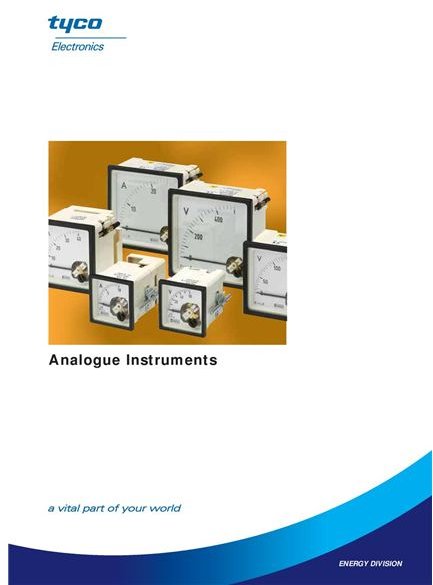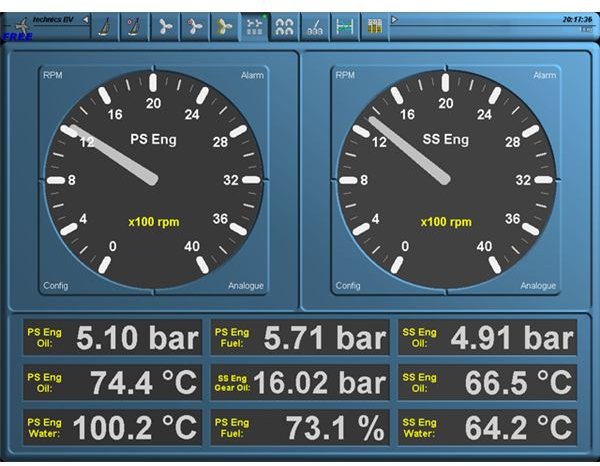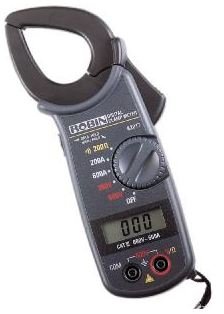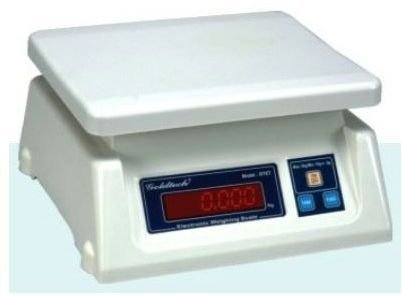What are Measuring Instruments? Analogue and Digital Measuring Instruments.
What are Measuring Instruments?
The devise that is used for measurement of certain physical quantity is called as measuring instrument. The measuring instruments are used frequently in our day-to-day life for the measurement of various quantities like length, weight, temperature, pressure, current, voltage etc. The instruments indicate the value of these quantities, based on which we get some understanding and also take appropriate actions and decisions.
Types of Instruments
There are two main types of the measuring instruments: analogue and digital. The analogue instruments indicate the magnitude of the quantity in the form of the pointer movement. One has to learn reading such instruments since there are certain markings on the scale. They usually indicate the values in the whole numbers, though one can get the readings up to one or two decimal places also. The readings taken in decimals places may not always be entirely correct, since some human error is always involved in reading.
The digital measuring instruments indicate the values of the quantity in digital format that is in numbers, which can be read easily. One doesn’t needs any prior training to read these instruments since they indicate the values directly in the numerical form. They can give the readings in one or more decimal places. Since there is no human error involved in reading these instruments, they are more accurate than the analogue measuring instruments.
Analogue Instruments


Digital Instruments



Functions of the Measuring Instruments
Most of the measuring instruments indicate the value of parameter in the form of the indicator movement, which gives us the magnitude of that quantity. There are many other functions performed by the instruments as indicated below:
1) Indicating the value of the physical quantity: The instruments are calibrated against the standard values of the physical quantities. The movement of the pointer directly indicates the magnitude of the quantity, which can be whole numbers or also fractions. Nowadays, the digital instruments are becoming very popular, which indicate the values directly in numerical form and even in decimals thus making them easy to read and more accurate.
2) Measuring instruments used as the controllers: There are number of instruments that can be used as the controllers. For instance, when a certain value of the pressure is reached, the measuring instrument breaks the electrical circuit, which stops the running of compressor. Similarly, the thermostat starts or stops the compressor of the refrigeration system depending on the temperature achieved in the evaporator.
3) Recording the data: Some measuring instruments can also be used to record and also store the data. In this age of computerization storing the recorded data has become quite easy. There are number of instruments that are connected to the pen that moves on the paper. As the pointer of the instrument moves as per the changes in the magnitude of the quantity, the pen also moves on the paper making the graph against certain parameter like time. Attaching small memory to the PCB can also enable recording of the instruments in the chip.
4) Transmitting the data: The measuring instruments can also be used to transfer the data to some distant places. The instruments kept in unsafe locations like high temperature can be connected by wires and their output can be taken at some distant places which are safe for the human beings. The signal obtained from these instruments can also be used for operating some controls.
5) Do calculations: Some measuring instruments can also carry out a number of calculations like addition, subtraction, multiplication, division, etc. Some can also be used to find solutions to highly complex equations.
Advantages and Disadvantages of the Digital Instruments
These days there is greater trend of using the digital instruments for measurement of all the important quantities like weight, length, temperature, humidity, current, voltage, rpm and even the blood sugar level. There are also digital instruments for measurement of the blood pressure, heart beat rate, and others.
Here are some of the advantages of the digital instruments over the analogue instruments:
-
They are very easy to read.
-
Since there are very few moving parts in the electronic instruments, they are usually more accurate than the analogue instruments. Even the human error involved in reading these instruments is very less, which adds to the accuracy of digital instruments.
-
The electronic items tend to be cheaper than the mechanical items.
-
The data from the instruments can be recorded for future reference.
-
The output of the digital devices can be obtained in the computer
There are also some disadvantages of the digital instruments. Here they are:
-
Sometimes they tend to indicate erratic values due to faulty electronic circuit or damaged display.
-
In case of high humidity and corrosive atmosphere the internal parts may get damaged and indicate the faulty values.
-
Sometimes these instrument show some readings even though there is no applied measurable parameter.
On the whole, the advantages of the digital instruments outdo the disadvantages, which is why they have become highly popular. You can find digital instruments in the cars, air planes, motor cycles, and also in places like air ports, railway stations, public places etc. The digital clocks are one of the most widely used instruments for the personal use and also in public and private places. The trend is towards the digital instruments since they are convenient to use and also have excellent looks. In future their use is sure to increase much more.
Image Courtesy
-
https://www.antonine-education.co.uk/New_items/MDM/Display.htm
-
https://www.freetechnics.eu/joomla/index.php?option=content&task=view&id=63
This post is part of the series: Measuring Instruments
This is the series of articles that describes the measuring instruments, their types, errors in the measuring instruments and other aspects.
